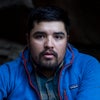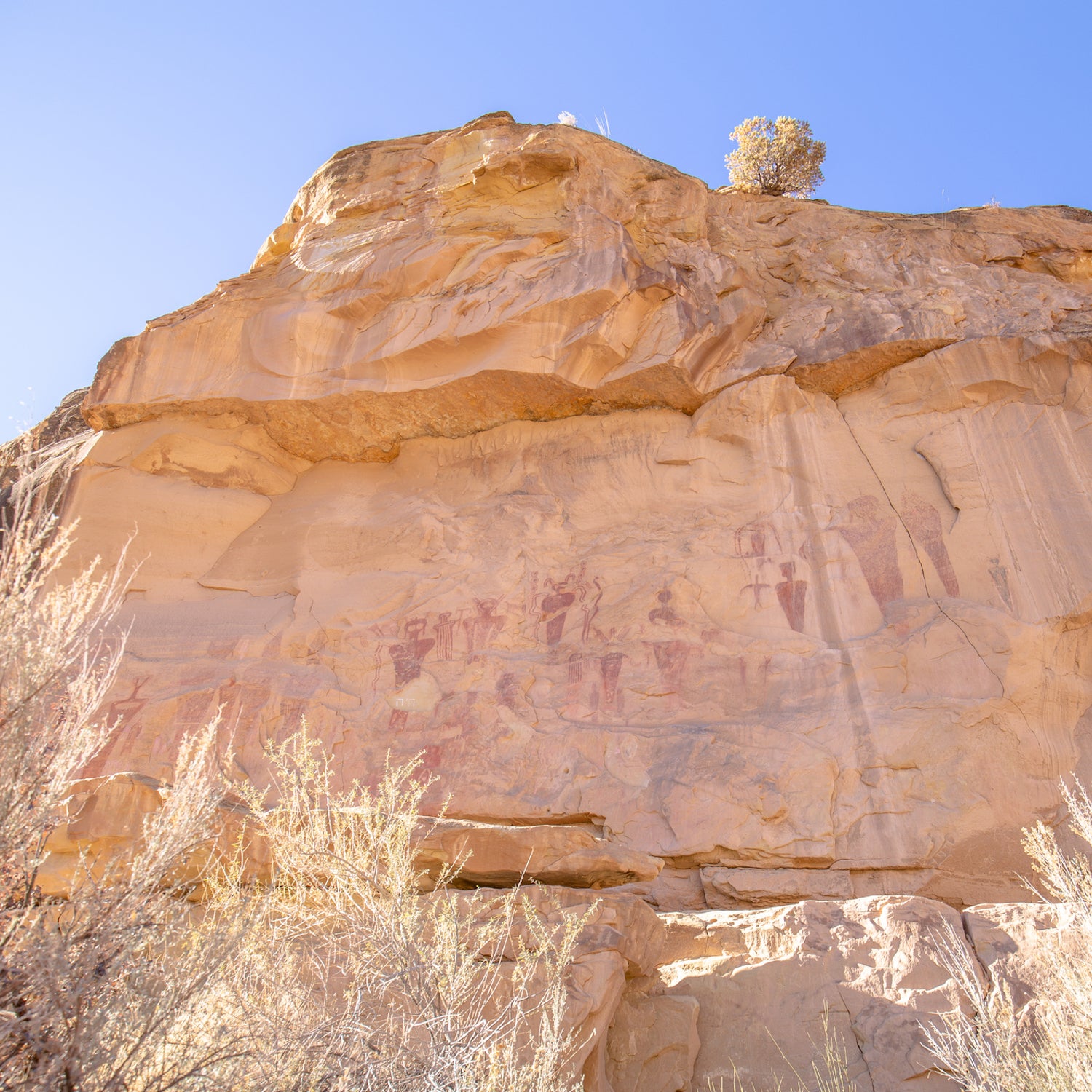In late April, former congressman and presidential candidate Rick Santorum : “We birthed a nation from nothing. I mean, there was nothing here. I mean, yes we have Native Americans, but candidly there isn’t much Native American culture in American culture.” His remarks from many within the Native American community. Santorum’s speech came a week after a white climber bolted over a petroglyph panel on the Sunshine Wall Slabs north of Arches National Park, and a day before with white supremacist phrases.
As an Indigenous person living in this country, I see these events as directly connected. We have inherited an incomplete understanding of the history of the U.S., and that understanding allows for egregious acts of dehumanization of Indigenous peoples. I know because I received the same education as most of white America growing up in Kansas.
I vividly remember sitting on the floor, alongside my second-grade peers, while we listened to our teacher read from a book about westward expansion and how Kansas came to be. The storyline of the children’s book about Native people spoke broadly about the arrival of the settlers, how Native people taught them to grow corn, and as these settlements expanded, the Natives peacefully moved away to Indian reservations. As the book continued, it spoke about how Native people drank raw blood from buffalo—at which point my entire class turned their heads toward me and made exclamations of disgust. The flood of embarrassment and confusion of that moment still haunts me today; that was not how my Navajo family lived.
After the reading, we were prompted to write a few sentences answering: What kind of Indian would you like to be? But the teacher told me that I couldn’t write about being Navajo because it would be an unfair advantage. I sat and cried, refusing to put pencil to paper in protest while the class moved on to other activities. The teacher assigned me to in-school suspension for the remainder of the day or until I finished the assignment. I sat in suspension for the rest of the day.
We do not choose the history we are born into, nor which side of it we land on. But we do have a choice about our actions and beliefs after we hear the whole story.
As I got older, this moment helped me realize how the larger American society relates to Indigenous peoples. The understanding that many of my peers left with was that Indigenous peoples were barbaric, if not subhuman, and that we willingly chose to relocate to reservations where we continue to live off of government subsidies. End of story. I saw how education can be used as a tool of oppression and to further societal beliefs about marginalized groups of people.
But I knew that the ancestral puebloan petroglyphs and structures that surrounded my grandparents’ home on the Navajo Nation held a much different story. I have seen some non-Native peers experience these sites, and walk away with a sense of confusion about the history they were taught versus what they experienced firsthand.
This continent has been a cradle of civilization for Indigenous peoples for millennia. But very few Americans learn about that history. From this cradle sprouted complex and sophisticated societies, which we walk through each day. Places like , located just east of St. Louis, Missouri, was the site of one of the largest urban settlements in the world. At its peak in 1100 C.E., Cahokia was likely larger than London, exceeding 20,000 inhabitants. Today this site sits right off I-70 between industrial and residential developments with little hint that it’s a Uunesco World Heritage site. Until the early 1800s, most Indigenous peoples had a higher standard of living and life expectancy than surrounding white settler societies.
The history of desecration of Indigenous historic and sacred sites spans back over a century in the Southwest. The arrival of Mormon settler communities in southeast Utah coincided with an increased demand for artifacts and human remains from museums and universities across the world. In the 1920s, the , for example, paid local Blanding residents $2 per piece of ancestral puebloan pottery. These economic forces combined with deeply held racist views toward Native people, allowed for pillaging of ancestral sites to the theft of bodies from graves. We live with these legacies today: there is still a for stolen artifacts from public lands; plus, there’s under-resourcing of federal institutions entrusted to protect the artifacts.
We do not choose the history we are born into, nor which side of it we land on. But we do have a choice about our actions and beliefs after we hear the whole story. This history is one we have violently inherited as a country, and it is also one that has been shaped by settler colonialism and racism.
It was of no surprise to me, as a Native person, to see phrases like “WHITE POWER” scrawled over the petroglyphs in Moab. Part of me was actually happy to see it, because I knew it would help illustrate the tie between white supremacy and the dispossession of Native people to their connection to homeland.
Moments like the defacing of petroglyphs in southern Utah can provide the necessary fodder to make much-needed changes as a society to how we respect Indigenous peoples and their histories. The momentum for this change should come from the outdoor community supporting Native communities to ensure that they can both access and protect our ancestral homelands. This means fully enforcing existing federal laws protecting these resources on public lands and empowering tribes and other Native-led organizations, like the , to be the managers of our own homelands. The first step toward rectifying this history is collectively unlearning the history we have been taught.


